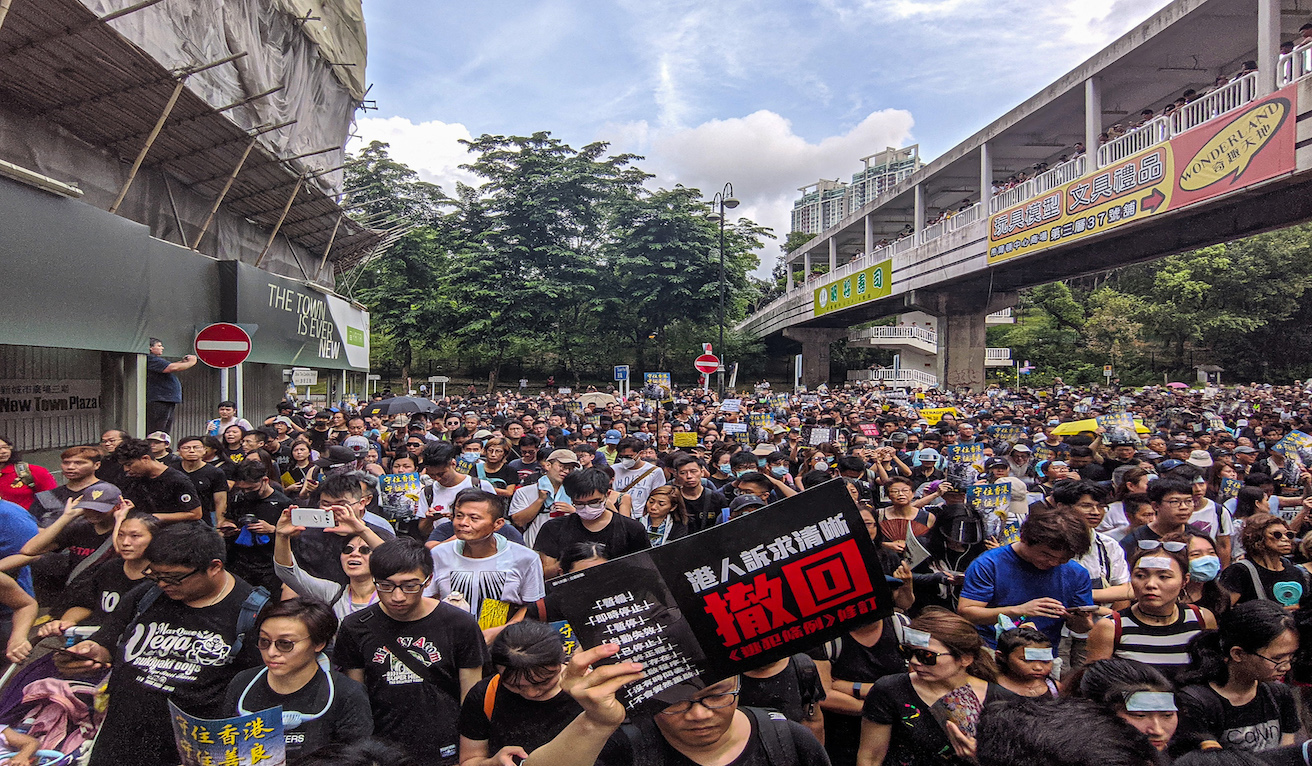Hong Kong: An Impossible Game?

Recent protests in Hong Kong over the government’s extradition bill have resulted in breaches of the freedom of speech, assembly and movement. The strategic question for the protesters is how to negotiate from a position of weakness.
Hong Kong’s (HK) civil unrest demonstrates what happens when political bargains lead to different expectations. For the People’s Republic of China (PRC), the 1997 handover of governmental control from the United Kingdom represented the removal of a colonial relic and the beginning of a fifty-year process of incorporating the city-state into its mother country. This included gradual introduction of administrative and legal reforms that integrated HK into the PRC, paralleled by increased migration and cultural assimilation between the island state and the mainland.
For many citizens of HK, devolution meant continuation of their special status under the “One Country, Two Systems” policy negotiated at the time of the handover. In their view HK’s status is akin to being “separate but equal” — HK retains its political, economic and cultural autonomy while gradually achieving administrative synchronicity with China. They are interested in self-determination, not in replacing HK’s status as a UK colony with colonisation by the PRC.
Initially, it was possible for these different expectations to co-exist. Generating 23 percent of China’s GDP and serving the most important financial and transportation centre in East Asia, in 1997 HK was a major portal to the developed world at a time when the PRC was still in a relatively early stage of state capitalist development. Nearly halfway into the 50 year devolution window, HK contributes less than three percent of China’s GDP and has been matched by Chinese and other Asian cities as an economic hub. It remains an offshore banking centre for Chinese capital and conduit for foreign investment into the mainland, but is no longer essential to China’s economic growth and has less leverage when addressing the Communist Chinese Party (CCP) on matters of mutual concern.
The current protests are the latest in a cycle extending back over a decade. In 2003, half a million people protested against revision of Article 23 of the Basic Law, which extended warrantless police powers of search and detention under anti-terrorism grounds. Under the banner of the so-called “Umbrella Movement” in 2014, protestors hit the streets when the Basic Law was revised to ensure that all nominees for HK political positions were vetted by a PRC-dominated nominating board. That same year the CCP issued a White Paper that stated that the interests of the PRC supersede HK’s constitutional autonomy under the “One Country, Two Systems” policy, a claim rejected by HK nationalists.
In 2016 protests broke out after the disqualification of candidates to the Legislative Council. This year the HK government submitted a bill allowing extradition to the PRC of criminal suspects, a move that was the catalyst for current protests. The protests are set against a backdrop of increased authoritarianism on the part of the HK government, which has moved to stifle non-conformist voices in violation of original provisions in the Basic Law guaranteeing freedom of speech, assembly and movement.
In effect, the PRC began the process of administrative integration of the city-state less than a decade after the handover and has continued ever since, using the HK government as its main instrument. HK nationalists have opposed integration all along. That brings up the question of how to look at the interplay between these actors. The answer is to see it as a three-sided strategic interaction “game.”
The way in which collective agents interact constitutes a strategic interaction “game.” This involves “nested”games played by sub-sets of each, such as hard and softliners that use militant and moderate tactics in pursuit of their ends. The contest is both horizontal — between collective actors —and vertical — between agents and principles within groups.
In the case of the HK protests, the three-sided game is played by the protest movement, the HK government and the CCP. Each side has its hardliners and softliners, although nationalists in the CCP and protest movement dominate their softline counterparts. The HK government is more evenly divided given its centrifugal loyalties and the need to appear capable of peacefully resolving the situation.
The limits of strategic engagement in HK are set by hardliners: open democracy and full autonomy for the protesters versus a full and complete devolution to the PRC control for CCP nationalists. These positions are antithetical and irreconcilable, so a peaceful solution requires a mutual turn towards something short of absolutes.
Protesters clashing with police and destroying symbols of HK and Chinese authority challenges the HK government’s legitimacy and its monopoly over organised violence in the territory. Since HK has a limited repressive apparatus, continued violent protests pose a more serious challenge that will be met by PRC force. Yet opposition hardliners continue to dominate the streets, even calling for “revolution” on the mainland as one of their goals. In return, Beijing has called them “terrorists,” setting the stage for a bloody denouement.
Peaceful resolution requires negotiating towards an even-sum — no one gets everything that they want but no one loses everything — , or positive sum outcome — where both sides achieve some objectives. This avoids the zero-sum — one side wins at the direct expense of the other or negative sum — both sides lose — results that otherwise would obtain. Since losses will be disproportionate in the event that force is used, the incentive to seek compromise should be strong for both the HK government as well as the protesters. For the CCP and HK government, the issue is how to placate the protestors without jeopardising the process of incremental integration. However, HK government concessions to the protesters have been rejected as insufficient.
The strategic question for the protesters is how to negotiate from a position of weakness. That requires a collective action strategy based on a demand platform managed by a unified leadership. The HK protests lack a unified leadership that balances moderate and militant demands, so a coherent negotiating platform remains elusive.
From the PRC perspective, the problems posed by the protests are four-fold: interruption of the process of administrative integration, undermining of CCP authority and influence in HK moving forward, the possibility of a “contagion” effect on the mainland and its impact on Taiwan. These are existential issues for the CCP much in the way that self-determination is for the protesters. The government of HK is the uncomfortable interlocutor between the two sides even if it ultimately answers to Beijing because it, nominally, represents HK’s interests.
In spite of the protester’s appeals to international solidarity, should China decide to forcibly quell the uprising, no one will come to their physical rescue. There may be calls for economic and diplomatic sanctions of the PRC, boycotts of Chinese goods and other punitive responses and perhaps some saber-rattling. The US-Hong Kong Policy Act, where the US grants Hong Kong independent customs territory status separate from the PRC, based on assessments of its political and economic autonomy, will likely be repealed. These measures will hurt the PRC, but no countervailing force will be brought into the fray.
For the PRC the prospect of international condemnation and economic sanctions is undesirable but preferable to allowing the problems posed by the protests to fester and grow. That puts a hard edge on what is negotiable and places finite limits on what protest leaders can achieve by pushing the protest envelope. Hence the need for a moderate incremental gains approach.
The interplay between hardliners and softliners is crucial to a peaceful settlement. Softliners need to prevail within their respective camps before a three-party settlement is tabled. However, with hardline nationalists prevailing in the HK opposition and CCP, the stage is set for in-group conflicts that delay adoption of moderate bargaining positions and raise the spectre of zero- or negative- sum outcomes.
Who are the hardliners and softliners in question? There is a generational split between younger (under 30) militants and older opposition moderates. The division in the CCP is between hardline security nationalists and softline diplomats and business leaders. In the HK government the division is between the civilian and security bureaucracies, although both are less “hard” because it is their compatriots that they are dealing with.
As it stands, HK is playing an “impossible game” where hardliners derail attempts to compromise. Peacefully resolving the impasse requires that moderates gain control of the bargaining positions of the actors involved, then negotiate an even-or positive-sum solution that gives something to everyone but no side gets everything that they want. This mutual second-best approach may not stave off some hard choices in the future but can serve as a platform not only for short-term peace but for ongoing talks about the status of the Special Administrative Region as it moves towards full devolution in 2047.
Dr Paul G Buchanan is the director of 36th-Parallel Assessments, an Auckland-based geopolitical and strategic analysis consultancy. He alternated US government and academic service prior to his arrival in New Zealand.
This article is published under a Creative Commons Licence and may be republished with attribution.




